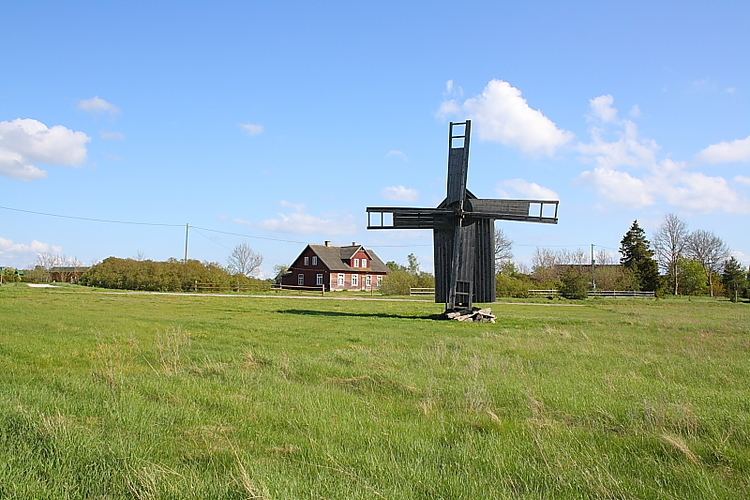 | ||
Vormsi, also Vormsö (Swedish: Ormsö, German: Worms) is the fourth-largest island of Estonia, located between Hiiumaa and the mainland with a total area of 92 square kilometres (36 square miles). It is part of Vormsi Parish, a rural municipality.
Contents
Map of Vormsi, L%C3%A4%C3%A4ne County, Estonia
History
Vormsi's history as an inhabited island dates back as far as the 13th century. During most of its history, the island has been inhabited by Estonian Swedes ("rannarootslased" in Estonian or "coastal Swedes" in English), whose population reached 3,000 before World War II. During the war, nearly all of Vormsi's population, along with other Swedes living in Estonia, were evacuated, or fled, to Sweden. The island's current population is approximately 240 inhabitants.
The island's Estonian name Vormsi is derived from its German name Worms or its Swedish name Ormsö. Swedish influence can also be seen in other place names, as in villages like Hullo (the administrative center), Sviby (the main port), Söderby, Norrby, Diby, Rälby, Förby, Borrby, Kärrslätt, Saxby, Busby, Suuremõisa (Magnushof, formerly Busby) and Rumpo; and lakes like Prästvik.
Economy
Vormsi is the per capita wealthiest island and region in Estonia outside of the Tallinn metro area, with incomes on the same level as inner Tallinn in Estonia. This is attributed to the fact that many wealthy people own summer homes on the island and are registered as residents, so their yearly income tax is forwarded to the island's budget.
Vormsi has no industrial activity. The island earns the majority of its revenues from taxation of mainland and overseas income of residents.
Residents
The island of Vormsi has homeowners from several countries: Estonia, Sweden, Finland, Switzerland
Name
Ormsö in Swedish means "Orm's Island", and can be translated also as "Snake Island".
